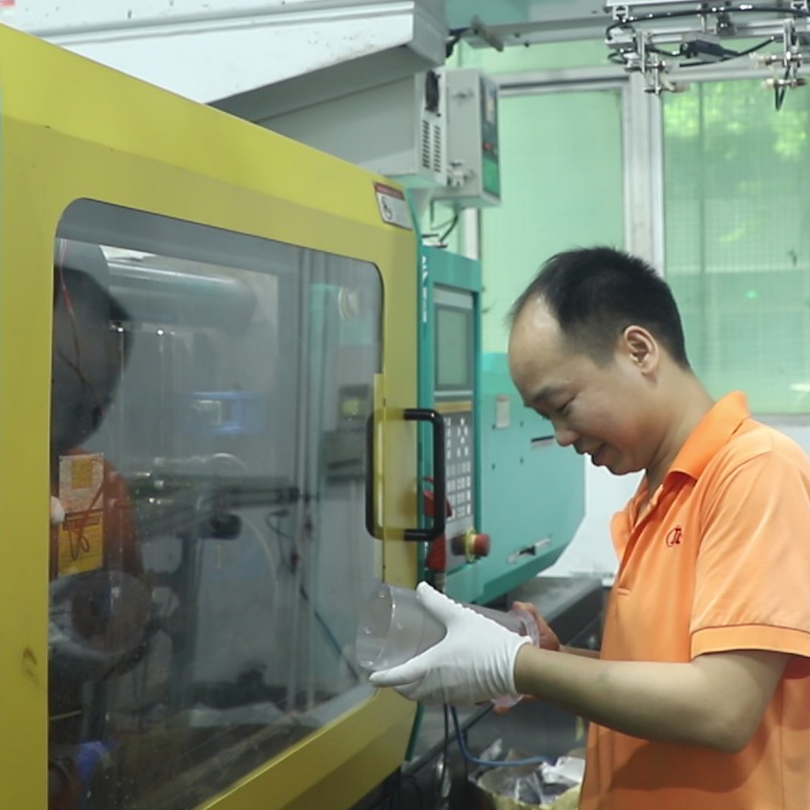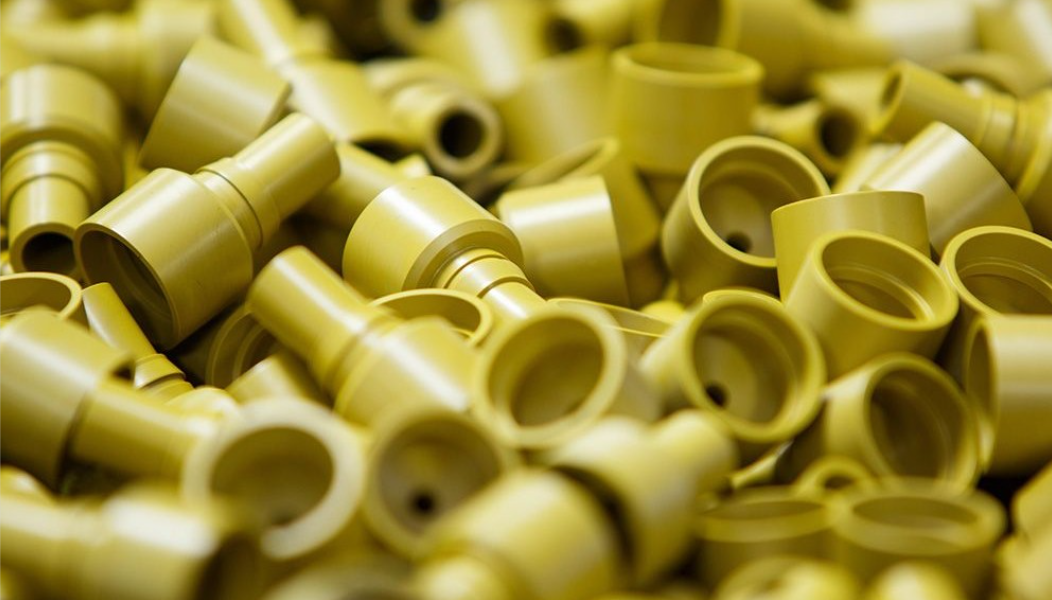Today, manufacturers can produce delicate plastic parts and components using 3D printing and plastic injection molding. While initially considered rival technologies, each technique is widely recognized as having distinct advantages and can even be combined to maximize production efficiency.
Here, we will explain when to use each technique and how they can be used together to support one another.
Applications Of 3D Printing and Plastic Injection Molding
Plastic injection molding and 3D printing are both valuable processes in their own right. At RJC, Engineers can create models with 3D printing on their desks and have them produced in a matter of hours.
Quality and value are the hallmarks of injection molding. High-volume runs of plastic designs with complex shapes are commonly manufactured with this process.
The Best Applications For 3D Printing Are:
- Fast turnaround times (1-2 weeks)
- Runs with low production volumes (100 parts or fewer)
- Frequent changes to designs
- Components or parts made of relatively small plastics
The Best Applications For Injection Molding Are:
- Lengthier turnaround times (5-7 weeks for simple parts)
- Runs with high production volumes (1,000+ parts per run)
- Part design for the final version (no more prototyping)
- No matter how large or complex the part is
Although 3D printing has recently been making news in innovative and experimental scenarios, most plastic parts produced today are formed using plastic injection molding. OEMs choose because of the benefits that can be gained in terms of quality, cost, and design complexity, including tight tolerances.
Tools For Design:
Injection molding tools are among the most expensive and time-consuming parts of the process. Using 3D printing during prototyping can also help injection molders reduce development time and lower tooling costs by cutting development time.
Traditional tooling is the best option for larger production runs and more precise molds, however. When handling thermoplastic resins with melting temperatures over 500°F, metal tools are the best option.
Custom Plastic Part Design:
3D printing has become increasingly popular in recent years, thanks to its ability to produce custom plastic parts in just a few hours or days.
For example, quick-turn technology has been embraced in the medical industry to create custom items such as prosthetics, dental products, orthopedics, exoskeletons, bones, implants, artificial heart valves, and more, with researchers working on 3D organ printing.
It is not meant to diminish the value and demand of plastic injection molding within the medical industry. On the contrary, consistently manufacturing large quantities of defect-free, complex medical components and devices has a tremendous value.
It is more beneficial for OEMs and molders if 3D printing and injection molding are viewed as complementary technologies instead of competitors. Utilizing these methods in combination can eventually help shorten pre-production iteration cycles and improve testing, manufacturing, and outcomes.
Which Is Better, Injection Molding or 3D Printing
Injection molding and 3D printing are both essential processes, but they accomplish different things. First, you have to determine what is right for you.
Despite injection molding being more professional, 3D printing is becoming a good alternative, and the trends are changing. It allows for really accurate parts to be made.
These two methods can assist rapid prototyping and production. Although they both have their advantages, which one will bring more benefits to your manufacturing process, that is why, first, you will have to understand their differences.
Injection Molding – How To Use It
This technology cannot be used without special equipment. Specialized machines are required for injection molding. There is a hopper for materials, an injection ram, and a heating unit in an injection molding machine.
For prototyping, injection molding molds can be expensive and limited in their capabilities. In addition, molds can be pretty costly to create with iteration.
Usually, these molds are made of steel, and they are challenging to modify, making them unsuitable for making prototypes.
On the other hand, for large productions, this is the best option. However, it would be best to remember that injection molding is also associated with high tooling costs.
3D Printing – How To Use It
Additive manufacturing can be used in several ways. Suppose 3D printing filament is what you need. In that case, you can get an FDM (Fused Deposition Modeling) printer also, if the company may wish to invest in larger, professional 3D printers, such as SLS (3D printers).
However, the cost of buying your industrial 3D printer might be too high for you to justify the investment. Alternatively, you can use Sculpteo, a 3D printing service that gives you access to 75+ types of materials and finishes.
Your best projects will be created using 3D printing technologies, whether they’re in metal, plastic, or resin. Several technologies can be used to make 3D prints, such as Multi Jet Fusion, CLIP (DLS), DMLS, etc.
Benefits Of Injection Molding
The benefit of using injection molding is the precision and repeatability with which you can produce large volumes. If you use plastic injection molding, you will have the option of choosing from virtually any material.
Within each material, there are thousands of variations, which will result in different properties. Just for plastic properties, weight, cost, and flexibility, the possibilities seem endless.
Aside from mass production, injection molding is also excellent for creating intricate details. With injection molding, the element can be easily added to your parts because of its pressure.
Thus, making substantial parts is relatively easy with injection molding. In addition, the plastic injection does indeed enable the injection of fillers into the injection molds.
There are several other advantages to injection molding, including:
Low Unit Costs
Molds must be built before replication can begin: Melts are injected at high pressure into the molds, and the casts are collected and finished as needed. By comparison, plastic injection molding makes efficient raw materials and doesn’t produce a lot of waste. Injection molding is relatively low-cost because of its simplicity and replicability. The lowest costs per unit area are associated with larger production sizes.
Product Quality
Exquisite precision is enabled by injection molding. To prevent air bubbles, segmentation, and other flaws in the design, every millimeter of the mold is filled. As a result, the product’s surface produced through injection molding will be smooth and functionally sound since no seams or assembly is required. As a result, these parts are visually appealing and more reliable than those made with 3D printing.
Speed
Injection-molded products can be set in a matter of seconds, depending on the plastic used. In addition, At RJC, it is possible to manufacture plastics without finishing them, which helps to cut down production time. Mold plates can also hold multiple pieces, allowing for faster production. When injection molding is combined with automation, hundreds of thousands of articles a day can be created, and their products can be sorted into batches with ease.
Benefits Of 3D Printing
As a first step, 3D printing makes it easy to make iterations. Rapid prototyping was considered an advantage of additive manufacturing for a long time.
However, it is no longer the case since it has also become a very reliable manufacturing method. This manufacturing technique is still best known for its ability to prototype quickly and easily.
You can print your design using additive manufacturing, modify it with your modeling software, and print it again once you have validated the changes. You will save time and money with this process and improve the quality of your products.
3D printing also reduces waste by reducing the need for raw materials. 3D printing appears to be the winner in this category, as injection molding was initially considered a low-scrape manufacturing technique compared to CNC machining.
When you 3D print, you only use as much material as you require for a whole project. Using 3D printing to improve your storage and supply chain management can also help you avoid inventory losses and costs. Your 3D design can be printed whenever you need it! It’s all taken care of!
A dematerialized supply chain may result from 3D printing as opposed to busy warehouses. It could be the perfect opportunity for your company to rethink its entire manufacturing process and reduce investment in tools.
Digital inventory – What does it mean? The use of 3D printing allows your parts to be created on-demand. It’s not necessary to store details. Just print them when needed.
As compared to plastic injection molding, 3D printing offers the following advantages:
Low Initial Cost
3D printing does not require specialized dies. Instead, the printer can print one or hundreds of the finished products at the exact cost per unit once the design file is complete.
Flexibility
In contrast to molds, 3D printers use data files instead of molds, so product design can easily be modified. Your team can use this to prototype different designs and stages.
Get 3D Printing And Injection Molding From RJC
For many years, RJC has been providing unique manufacturing solutions and can deliver results that match the needs of any customer.
In addition to 3D printers, we maintain several injection molding machines for prototyping so that we may help you design your injection molded parts. Get in touch with us today for more details about our services.







